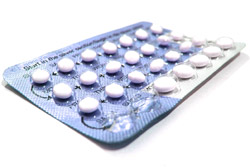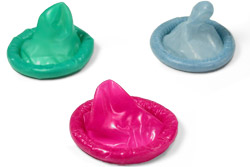- What are contraceptives?
- Who uses contraceptives?
- Prevalence of contraceptive use
- Benefits of contraceptive use
- Limitations and side effects of contraceptive use
- Important considerations in choosing a contraceptive method
- How do contraceptives work?
- Hormonal contraceptives
- Combined oral contraceptive pill
- Progesterone only contraceptive pill
- Emergency contraceptive pills
- Progesterone only injectable contraceptives
- Combined contraceptive patches
- Combined vaginal ring
- Subdermal contraceptive implants
- Minera/levonorgestrel-releasing intrauterine system
- Lactational amenorrhoea
- Fertility awareness methods
- Non-hormonal contraceptive methods
- Comparing methods: key benefits and limitations of popular methods
What are contraceptives?

Contraceptive methods which are hormone dependent may either:
- Alter the body’s hormones so that an egg cannot be fertilised. Contraceptives that do this are commonly known as hormonal contraceptive methods; or
- Monitor the changes to hormone levels which naturally occur throughout the menstrual cycle, and avoid sex during periods when it is possible to become pregnant. These known as fertility awareness methods.
Barrier methods on the other hand rely on a physical barrier, which prevents the male’s sperm and the female egg coming into contact during sexual intercourse, and in doing so, prevents fertilisation.
Hormonal contraceptives are typically long term methods which provide protection at all times whilst they are being taken, regardless of whether the user is sexually active.
Emergency contraceptives are also hormonal contraceptives which can be taken immediately (within five days) after unprotected sexual intercourse to prevent pregnancy occurring.
Barrier methods are inserted or applied just prior to sexual intercourse. They must be applied before each act of intercourse to protect against pregnancy.
Who uses contraceptives?
Hormonal contraceptives are used by fertile women (i.e. women who experience menstrual cycles, typically aged 15-49) who wish to prevent pregnancy. They are typically used by women who are regularly sexually active, and therefore require ongoing protection from pregnancy.
Barrier methods of contraception are also used by women of reproductive age who wish to prevent pregnancy. However, they are particularly appropriate for women who also need to protect themselves from STIs (i.e. women who have partners of unknown STI status).
Prevalence of contraceptive use
In Australia, more than 70% of all adult women and 95% of fertile women use a method of contraception. Oral contraceptive pills, used by 33.6% of women who use contraception, are the most commonly used method, followed by female sterilisation (22.5%), condoms (21.4%) and vasectomy (19.3%). Around 19% of Australian women who have ever had sex have used an emergency contraceptive, and 53% of emergency contraceptive users have used this method only once.
Benefits of contraceptive use

Women are better positioned to participate in social life, find employment and attain education when they are using contraceptives and do not risk falling pregnant. As these activities generally increase women’s status in society, contraceptives indirectly promote the rights and status of women.
Women who become pregnant very quickly after childbirth have worse pregnancy outcomes (e.g. they are more likely to suffer from a serious medical condition or to die during pregnancy). Their babies are also more likely to have poor health outcomes (e.g. to be born at a low birth weight). The World Health Organisation estimates that globally, 100,000 maternal deaths could be averted every year, if all women who did not want any more children were able to avoid pregnancy. These deaths occur for the most part in developing countries where contraceptive coverage is low.
There are a number of non-reproductive health benefits associated with the use of some contraceptive methods. Combined (i.e. oestrogen and progesterone) hormonal methods are associated with a decreased risk of ovarian and endometrial cancers. Progesterone only injections also protect against these cancers and also against uterine fibroids. Contraceptive implants and female sterilisation have been shown to reduce the risk of pelvic inflammatory disease.
Enabling women to avoid pregnancy prevents the psychological health effects of unwanted pregnancy and reduces the demand for abortion. In Australia, 22.6% of women who have ever been pregnant have terminated at least one pregnancy, indicating a significant proportion of Australian women have at some stage in their life dealt with emotional stress related to unwanted pregnancy.
The ability to control their fertility also allows women to better control other aspects of their life, for example to decide when and for what reasons they get married. Since contraceptives became widely available in the 1970s, women’s fertility and marriage patterns have changed considerably in Australia. Women now marry and have children later in life and on average, have less children. These demographic changes are likely to have lessened the emotional and economic burden of child-rearing, as families now typically have longer to accumulate financial resources prior to childbirth. Smaller family sizes also mean that parents have more time and resources to dedicate per child.
Limitations and side effects associated with contraceptive use

There are also limitations regarding the effectiveness of various contraceptive methods, and no method is 100% effective. For example, male condoms are thought to be effective in protecting against unwanted pregnancy in 97% of cases and the effectiveness of hormonal contraceptive methods is much higher.
One of the key limitations of most contraceptive methods (male and female condoms being the exception), is their failure to protect against STIs. Individuals who have sex with partners of unknown STI-status (i.e. partners whom they have not been for an STI check with) should use condoms for STI prevention. Condoms can be used either alone or in combination with another contraceptive method.
There are some, typically minor, side effects associated with some forms of contraceptives, and particularly with hormonal methods. These inc
lude:
- Breast tenderness;
- Nausea;
- Acne;
- Headaches;
- Dizziness;
- Irregular menstrual bleeding;
- Abdominal bloating or pain;
- Mood changes;
- Reduced libido.
The side effects of each method are detailed more fully on pages dedicated to each method- see below for further information.
There are also some health risks associated with various forms of contraceptives. Combined oral contraceptives are associated with very or extremely rare cases of:
- Blood clots;
- Heart attack;
- Stroke.
Intrauterine contraceptive devices (IUDs) are associated with rare cases of pelvic inflammatory disease [LINK to URL: Pelvic Inflammatory Disease] and may also increase the risk of anaemia in women who already have low blood haemoglobin.
Contraceptive methods (with the exception of sterilisation) do not affect fertility irreversibly. With most methods, fertility returns immediately after contraceptive use has stopped.
Important considerations in choosing a contraceptive method

There are many different contraceptive methods available and choosing the most suitable method may be confusing. The most appropriate contraceptive method will depend on characteristics of the woman wishing to prevent pregnancy, for example her age, parity, future fertility desires and health. The woman’s lifestyle is also a determining factor, and other factors, for example the patient’s geographic location and financial situation may also play a role.
When choosing a contraceptive method it is useful to speak to your doctor about contraceptive options. Many contraceptives also require a prescription. A doctor can offer advice on which method/s are suitable and about the benefits and limitations of each available method. Many women will have heard about and/or be interested in using a particular method, and women who have a method in mind should let their doctor know that they would prefer this method. Unless there is a medical reason not to, a doctor will usually prescribe a woman’s preferred method.
Women assessing contraceptive options should bear in mind that the best contraceptive method is not necessarily the one which is the most effective in theory. In order to prevent a pregnancy in the real world, contraceptive methods must be used both correctly and consistently. For example, although combined hormonal contraceptives are the most effective means of preventing pregnancy, they are also more likely than other methods to cause side effects. Globally, side effects are the most common reason women stop using contraceptives. In Australia, some 23% of fertile women who do not wish to become pregnant and do not use contraceptives, cite side effects as their reason for non-use. Thus, for women who experience side effects, combined hormonal contraceptives may be an inappropriate method, despite their high level of effectiveness.
A woman must fully consider her ability to use the contraceptive method correctly and consistently. Women who are forgetful or have erratic schedules (e.g. shift workers) may find it difficult to comply with contraceptive regimes which require daily action (i.e. oral contraceptive pills), particularly if that action has to be taken at the same time each day (e.g. the progesterone-only oral contraceptive must be taken at the same time +/- 3 hours). Women who wish to hide their contraceptive use from partners may be better able to use a method which requires less frequent administration than oral contraceptive (e.g. an injection, implant or intrauterine device (IUD)).
Similar to women in steady relationships, women who have casual sexual partners need contraceptive protection. However women who have sex with casual or multiple partners also have an increased risk of contracting STIs. The need to protect against STIs is thus an important consideration in terms of contraceptive choice for these women, who should use male or female condoms to protect against STIs, either alone or in conjunction with another contraceptive method. Women who are concerned about their ability to enforce condom use at every act of sexual intercourse (e.g. commercial sex workers, young women with limited skills in negotiating contraceptive use) should use another contraceptive method (e.g. oral contraceptive pills) in addition to condoms.
Medical history and examination
When a woman visits a doctor for a contraceptive prescription, the doctor will usually begin by asking questions about the woman’s general health. This allows the doctor to assess whether the woman has any health issues which may make using some types of contraceptives dangerous. The doctor is likely to ask about:
- Cardiovascular risk factors;
- Other medications being taken;
- Allergies;
- Health problems, including:
- Migraines (contraindication for hormonal methods);
- Gonorrhoea (contraindication for IUD);
- Chlamydia (contraindication for IUD);
- Acquired immune deficiency syndrome without antiretroviral treatment (contraindication for IUD).
The woman’s height, weight and blood pressure are often also checked, as these may influence the choice of contraceptive method, or the period for which it is effective (e.g. implantable contraceptives are effective for a shortened period of time in women who weigh > 70 kg, compared to women who weigh < 70 kg).
Pelvic examinations are not typically necessary, unless indicated by the method (e.g. pelvic examination is necessary to select a correctly fitting diaphragm). Screening for cervical cancer (i.e. a pap smear) is not a prerequisite for contraceptive prescription as it has no bearing on the effectiveness of contraceptive methods.
Considerations for adolescent women

Adolescent women are at a particularly high risk of becoming pregnant when they do not want to be, as they may be under-educated about contraception and pregnancy, or scared to access contraceptives. Their lifestyle and restrictions may make it more difficult to use some contraceptive methods.
Young women assessing their contraceptive options should consider the following points:
- Young women are often more sensitive to the side effects of hormonal contraceptives than older women. When taking hormonal contraceptives for the first time, young women should be prepared to experience some side effects (which typically diminish over time). Women who expect side effects are better prepared for them and less likely to stop using contraceptives when they experience them;
- Young women may find it more difficult to take contraceptive pills on a daily basis (e.g. because they are scared that their parents will find the pill
s). Contraceptive methods which can be taken without others knowing, (e.g. injectables) may therefore be more acceptable for at least some adolescent women; - Young women, and particularly those who are not married, are more likely than their older counterparts to have multiple sexual partners. This increases their risk of STIs and using contraceptive methods which also protect against STIs (male and female condoms), or dual methods of contraception (e.g. oral contraceptive pill and condoms) is particularly important for young women with multiple sexual partners;
- Young women may have less control over when they have sex and whether they can access contraception. Young women may therefore have a greater need for emergency contraceptives. However, research amongst Australian university students revealed poor knowledge of emergency contraception. Many students were unaware that emergency contraceptive pills are available over the counter, and that they could be used for days after unprotected intercourse, not only the morning after. Young women who are using contraceptive methods which may occasionally fail (e.g. condom) should be aware of a place where they can access emergency contraceptive pills and may wish to discuss the benefits and limitations of this method with a doctor;
- Young women are more likely to develop complications during pregnancy than their older counterparts, as their bodies are still growing. Preventing pregnancy in young women is thus extremely important as it is also likely to prevent high-risk pregnancies which result in complications.
Considerations for women who have recently given birth

- The oestrogen in combined oral contraceptives impairs lactation. Therefore oestrogen-based methods are not recommended for breastfeeding women as they may negatively affect the health of the feeding baby;
- Progesterone only contraceptives do not affect breast milk production;
- While there is no evidence that progesterone affects the development of a breastfed infant, its affects on the infant’s brain development have not been adequately studied;
- Progesterone only methods are usually not recommended within six weeks of childbirth for women who are breastfeeding;
- Women that gave birth childbirth six weeks or longer ago can safely use progesterone only methods, even if they are breastfeeding;
- Exclusive and regular breastfeeding provides a degree of contraceptive protection in the first six months after childbirth. However, women who wish to increase the reliability of their contraceptive protection should use an additional method.
Considerations for women nearing menopause
As a woman approaches menopause, her menstrual cycle typically becomes irregular and may disappear for months at a time. This usually occurs between 45-55 years of age, and some 50% of women will be infertile due to menopause by age 50, and 96% by age 55. A woman is considered post-menopausal and infertile when she has not experienced a menstrual cycle for 12 consecutive months.
Until a woman is confirmed as post-menopausal, it is important that she continue to use contraceptives if she wishes to prevent pregnancy. As women approaching menopause typically do not want any more children and pregnancy at this stage of life comes with a high risk of complications, preventing pregnancy amongst this group is extremely important. The following points should be considered by women approaching menopause:
- Permanent methods of contraception (e.g. male or female sterilisation) may be particularly suitable for women who do not wish to have any more children;
- Older women are more likely to have conditions of the reproductive system which contraindicate sterilisation;
- For women over 35 years of age who smoke or experience migraine headaches, hormonal methods are often unsuitable;
- Emergency contraceptives can be used safely by older women, even older women for whom long term hormonal methods are unsuitable;
- Fertility awareness methods are unsuitable for women approaching menopause as their menstrual cycle is irregular.
How do contraceptives work?
Hormonal contraceptive methods

Barrier methods work by providing a barrier which prevents the mixing of sexual fluids during intercourse. As the male partner’s sperm never come into contact with the female partner’s oocyte, pregnancy is prevented.
Hormonal contraceptives
Combined oral contraceptive pill

Progesterone only contraceptive pill
Progesterone only contraceptive pills, also known as the mini pill, are similar to combined oral contraceptives except that they do not contain oestrogen. This makes them a suitable alternative for women who are breastfeeding or unable to use oestrogen methods. The progesterone only contraceptive pill protects against pregnancy in two ways:
- By preventing ovulation (i.e. the release of an egg from the ovaries); and
- By thickening the cervical mucus, and thus making it more difficult for sperm to travel through the cervix to the uterus.
Emergency contraceptive pills, colloquially known as "morning after" pills, are hormonal pills taken after sexual intercourse which may have accidentally caused the woman to become pregnant (e.g. sexual intercourse in which a condom broke or slipped off). They can be taken up to 5 days after unprotected intercourse, but the sooner they are taken, the less likely a pregnancy is to occur. The pills are similar to other oral contraceptives and can contain oestrogen and progesterone or progesterone alone. They work by delaying the release of eggs from the ovaries.
Progesterone only injectable contraceptives
Progesterone only injectable contraceptives are injections containing a progestin similar to progesterone produced naturally in females. The injections work primar
ily by preventing the release of an egg from the ovaries. Intramuscular injections (and more recently and rarely subcutaneous injection, that is an injection under the skin) are performed at a health facility every two or three months, depending on the brand. In Australia the most commonly available contraceptive injections last three months and are branded Depo Provera. As they do not contain oestrogen, progesterone-only injectables can be used safely during lactation.
Combined contraceptive patches
The combined oral contraceptive patch is a small square of hormone-containing adhesive plastic. It is attached to the woman’s body and constantly releases oestrogen and progesterone into the blood stream, through the skin. The patch must be replaced weekly for three weeks, and is then removed for the fourth week to allow menstrual bleeding.
The combined vaginal ring is a flexible, hormone-containing ring which is placed in the vagina. It constantly releases two hormones, oestrogen and progesterone, which prevent oocytes being released from the ovaries. The vaginal ring is a relatively new device but initial studies suggest that it is highly effective in preventing pregnancy. In Australia it is marketed as Nuvaring.
Subdermal contraceptive implants
Subdermal contraceptive implants are progesterone-releasing rods, which are inserted beneath the skin of the upper arm. They are usually about the size of a match stick (although capsule size implants are also available) and must be inserted by a trained health professional. Following insertion, they prevent pregnancy for 3-7 years, unless removed. As contraceptive implants contain only progesterone, they are suitable for use during lactation and by women who are unable to tolerate oestrogen. In Australia contraceptive implants are marketed as Implanon.
Minera/levonorgestrel-releasing intrauterine system
The Minera intrauterine system (IUS) is a progesterone-releasing device which is placed in a woman’s uterus. It is inserted through the vagina and cervix by a trained health professional and provides long term contraceptive protection (up to five years). It protects against pregnancy by preventing the lining of the uterus (known as the endometrium) from growing. The endometrium supports the early stages of embryo growth and thus prevents endometrial growth prevents pregnancy.
Lactational amenorrhoea is a contraceptive method which takes advantage of the natural contraceptive effect of breastfeeding. It can be used by women who have not experienced menstrual bleeding and have breastfeed exclusively (or almost exclusively), both during the day and at night, since childbirth. The method provides effective contraception for up to six months after childbirth. It works because lactation prevents the release of hormones necessary for ovulation.
Fertility awareness contraceptive methods are methods in which the patient prevents pregnancy by being aware of her fertility throughout her menstrual cycle. The woman is then able to determine the times at which she might possibly become pregnant and avoid sex, or use other contraceptive methods at those times. As a woman’s hormone and fertility levels change throughout her menstrual cycle, her body temperature and the texture of her cervical mucus also change. Women can predict fertility based on these changes, or by monitoring the number of days since their last menstrual bleeding.
Non-hormonal contraceptive methods

For more information, see Male Condoms.
The female condom is a transparent, loose fitting, polyurethane sheath, with a flexible ring at each end. It is 17cm long and has one closed and one opened end. The closed end is inserted into a woman’s vagina prior to sexual intercourse, and the male partner then inserts his penis into the open end of the condom during intercourse. Female condoms protect against unwanted pregnancy and STIs.
For more information, see Female Condoms.
The diaphragm is a soft latex cup which is inserted deeply into the vagina prior to sexual intercourse and left in place for at least six hours after intercourse. It covers the cervix and therefore prevents sperm entering the uterus and coming into contact with an oocyte. Diaphragms come in different sizes and women wishing to use this contraceptive method must visit a trained health professional for a pelvic examination, which will enable the correctly sized diaphragm to be selected. Diaphragms are often used in conjunction with spermicides to increase their effectiveness.
For more information, see Diaphragm.
Cervical caps are similar to diaphragms, but for women who have ever given birth, they provide less effective contraceptive protection. They are soft latex cups which are inserted into the vagina prior to intercourse. They fit snugly around the cervical opening and create a barrier which prevents sperm entering the uterus and coming into contact with an egg. Caps are often used in conjunction with spermicides to increase their contraceptive efficacy.
Female sterilisation-tubal ligation or hysterectomy
Female sterilisation is a pe
rmanent method of contraception which is rarely reversible. Sterilisation can be achieved either by blocking or removing the fallopian tubes (most commonly referred to as tubal ligation) or removing one or more of reproductive organs necessary for pregnancy.
A sterilisation procedure in which the uterus is removed is referred to as a hysterectomy. A procedure in which the uterus, ovaries and fallopian tubes are removed is known as a hysterectomy with bilateral salpingo-oophorectomy or a radical hysterectomy. The latter is typically only performed when patients have other complications which require removal of the ovaries or tubes.
Both procedures provide a high level of contraceptive protection, however both are invasive surgical procedures which carry additional risks associated with surgery (e.g. from anaesthetic or infection). As the method is permanent, it is not suitable for women who wish to have children in the future.
Male sterilisation (vasectomy)
Vasectomy is a surgical procedure in which the vas deferens (the tube which links the testicles to the ejaculatory ducts in the penis) is severed. In most cases one or both of the severed ends of the vas are ligated (tied off). This blocks the path by which sperm leave the testes and therefore makes a man permanently sterile.
For more information see Vasectomy.
Coitus interruptus or withdrawal
Coitus interruptus is a contraceptive method in which the male withdraws his penis from his partner’s vagina prior to ejaculation. It is the least reliable of all contraceptive methods, however it is also a method which is always available to all couples.
For more information see Coitus Interruptus.
Spermicides are chemical substances which kill sperm by breaking the membrane of the sperm cell. Spermicides are available in a range of preparations which include foaming tablets, creams, jellies, suppositories, sponges and foams. They are inserted deep into the vagina shortly before sexual intercourse. As spermicides used alone are one of the least effective contraceptive methods, they are often used in conjunction with either a condom, cervical cap or diaphragm.
Comparing methods: key benefits and limitations of popular methods
|
Contraceptive method |
Benefits |
Limitations |
|
Monthly hormonal contraceptive pills |
|
|
|
Hormonal contraceptive injections |
|
|
|
Emergency contraceptive |
|
|
|
Combined hormonal contraceptives |
|
|
|
Progesterone-only hormonal contraceptives |
|
|
|
Hormonal contraceptive patch or vaginal ring |
|
|
|
Hormonal contraceptive implants |
|
|
|
Intrauterine devices and systems |
|
|
|
Sterilisation |
|
|
|
Condoms |
|
|
|
Spermicides, diaphragms, caps and withdrawal method |
|
|
|
Fertility awareness methods |
|
|
|
Lactational amenorrhoea |
|
|
More information
 |
For more information on different types of contraception, male and female anatomy and related health issues, see Contraception. |
References
- World Health Organisation. Family Planning: A global handbook for providers [online]. 31 August 2007 [cited 20 June 2009]. Available from URL: http://www.who.int/ entity/ reproductivehealth/ publications/ family_planning/ en/
- Richters J, Grulich AE, de Visser RO, Smith AM, Rissel CE. Sex in Australia: Contraceptive practices in a representative sample of women. Aust NZ J Public Health. 2003; 27(2): 210-6.
- Smith AM, Rissel CE, Richters J, Grulich AE, de Visser RO. Sex in Australia: Reproductive experiences and reproductive health among a representative sample of women. Aust NZ J Public Health. 2003; 27(2): 204-9.
- World Health Organisation. Health benefits of family planning [online]. 1995 [cited 24 June 2009]. Available from URL: http://www.who.int/ reproductivehealth/ publications/ family_planning/ HRP_FHE_FPP_95_15/ en/ index.html
- Gollub E, Warren M. The female condom: A guide for planning and programming [online]. World Health Organisation. 2005 [cited 24 June 2009]. Available from URL: http://www.who.int/ hiv/ topics/ vct/ sw_toolkit/ The_female_condom2.pdf
- John Hopkins Bloomberg School of Public Health. Focus on improving hormonal method continuation. 5 April 2007 [cited 24 June 2009]. Available from URL: http://www.infoforhealth.org/ inforeports/ hormonal_methods/ hormonal.pdf
- Lesnewski R, Prine L. Initiating hormonal contraception. Am Fam Physician. 2006; 74(1): 105-12.
- Williams H. Adolescent sexual and reproductive health: Practical implications for clinical practice in Victoria [online]. Family Planning Victoria. 3 August 2006 [cited 29 June 2009]. Available from URL: http://www.fpv.org.au/ pdfs/ Bulletin_2.pdf
- Callabretto, H. Emergency contraception – knowledge and attitudes in a group of Australian university students. Aust NZ J Public Health. 2009; 33(3): 234-9.
- World Health Organisation. Progesterone-only contraceptive use during lactation and its effects on the neonate. 6 June 2009 [cited 20 June 2009]. Available from URL: http://www.who.int/ reproductivehealth/ publications/ family_planning/ en/
- Family Planning New South Wales. The male condom fact sheet [online]. 31 March 2008 [cited 20 June 2009]. Available from URL: http://www.fpnsw.org.au/ fs.020_male_condom08.pdf
- Marie Stopes International Australia. Contraception: A guide to help you choose [online]. 30 January 2008 [cited 28 July 2009]. Available from URL: http://www.mariestopes.com.au/ contents/ Contraception Info Sheet.pdf
- Family Planning New South Wales. The female condom factsheet [online]. 26 March 2008 [cited 20 June 2009]. Available from URL: http://www.fpnsw.org.au/ fs.003female_con_08.pdf
- Farmer L, Everett S. Non-hormonal contraception. Obstet Gynaecol Reprod Med. 2008; 18(2): 33-8.
- Torpy JM, Lynm C, Glass RM. JAMA patient page: Hysterectomy. JAMA. 2004; 291(12): 1526.
- Royal College of Obstetricians and Gynaecologists. Male and female sterilisation. Evidence-based clinical guidelines no. 4 [online]. London: RCOG Press. 2004 [cited 27 July 2009]. Available from URL: http://www.guideline.gov/ summary/ summary.aspx?ss=15&doc_id=7669&nbr=4468
All content and media on the HealthEngine Blog is created and published online for informational purposes only. It is not intended to be a substitute for professional medical advice and should not be relied on as health or personal advice. Always seek the guidance of your doctor or other qualified health professional with any questions you may have regarding your health or a medical condition. Never disregard the advice of a medical professional, or delay in seeking it because of something you have read on this Website. If you think you may have a medical emergency, call your doctor, go to the nearest hospital emergency department, or call the emergency services immediately.







